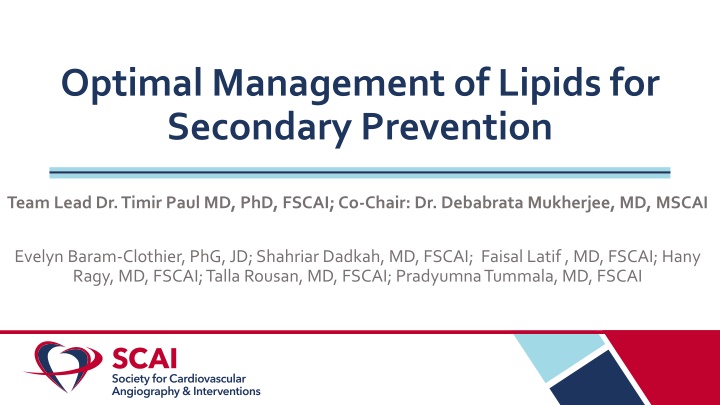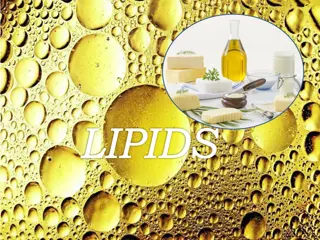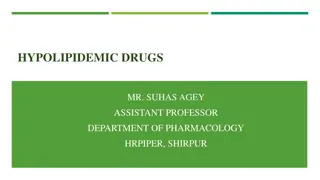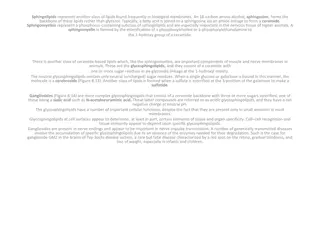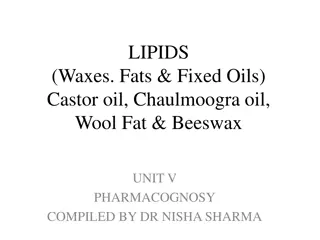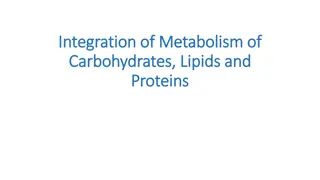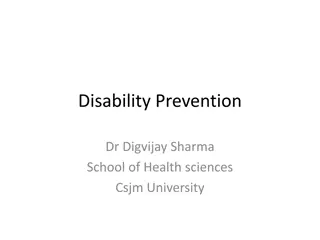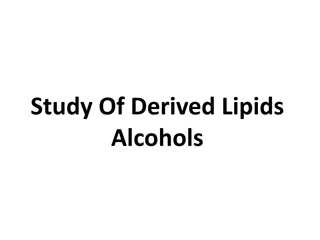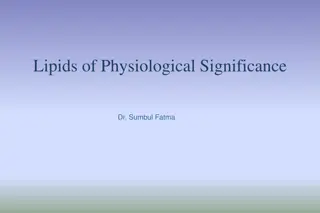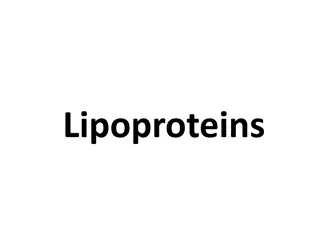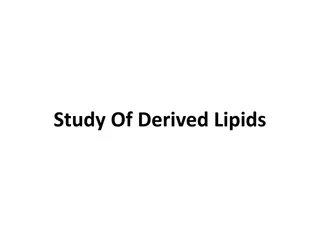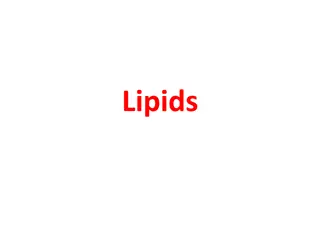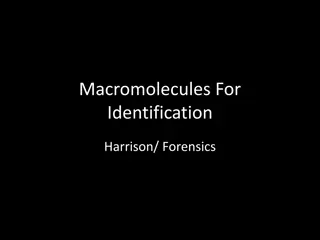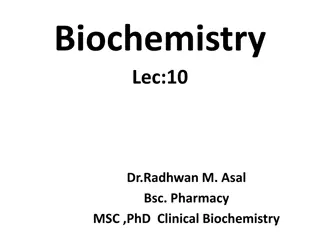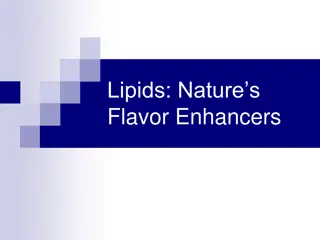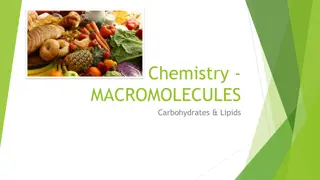Optimal Management of Lipids for Secondary Prevention Team Study
Lipid management in secondary prevention plays a crucial role in reducing cardiovascular risk. This study led by Dr. Timir Paul aims to address system-level gaps in care, enhance communication for optimal therapy, and empower patients in achieving target lipid levels. By recognizing disparities and advocating guideline-directed therapies, the team strives to improve outcomes and reduce costs for underserved populations. The study also highlights pharmacological options for dyslipidemia and lipid goals in ASCVD, emphasizing lower LDL-C thresholds and tailored therapies for high-risk patients.
Download Presentation

Please find below an Image/Link to download the presentation.
The content on the website is provided AS IS for your information and personal use only. It may not be sold, licensed, or shared on other websites without obtaining consent from the author.If you encounter any issues during the download, it is possible that the publisher has removed the file from their server.
You are allowed to download the files provided on this website for personal or commercial use, subject to the condition that they are used lawfully. All files are the property of their respective owners.
The content on the website is provided AS IS for your information and personal use only. It may not be sold, licensed, or shared on other websites without obtaining consent from the author.
E N D
Presentation Transcript
Optimal Management of Lipids for Secondary Prevention Team Lead Dr. Timir Paul MD, PhD, FSCAI; Co-Chair: Dr. Debabrata Mukherjee, MD, MSCAI Evelyn Baram-Clothier, PhG, JD; Shahriar Dadkah, MD, FSCAI; Faisal Latif , MD, FSCAI; Hany Ragy, MD, FSCAI; Talla Rousan, MD, FSCAI; Pradyumna Tummala, MD, FSCAI
Optimal Management of Lipids for Secondary Prevention Recognizing system-level gaps in the care of our PCI patients Documenting and communicating across the care team to ensure that our patients receive optimal guideline directed lipid-lowering therapy for secondary prevention Empowering patients with knowledge necessary to make decisions about setting and achieving their target lipid levels
Gaps in CVD RiskAssessment Only 50% of patients undergoing PCI had a lipid profile documented at any point during their hospitalization. Only 35.7% of PCI patients had a lipid panel within 6 months of the intervention. Many PCI patients do not receive guideline-directed medical therapy, such as antiplatelet therapy and statins. Tailoring therapy based on individual risk factors can improve outcomes and reduce costs. Minorities and underserved populations have a higher burden of CVD and are less likely to receive guideline-directed secondary prevention therapies. Gupta, S et al. American Heart Journal 2019 Johnson, MT et al. Journal of Clinical Lipidology 2019 Alasnag, M et al. BMC Cardiovascular Disorders, 2020 Mukherjee, D et al. Circulation, 2004 Toma et al, Journal of Clinical Nursing, 2019 Amin et al, Circulation, 2020 Kaufman et al, Current cardiology reports, 2021
Pharmacological Options for Dyslipidemia Statins Ezetimibe PCSK9 inhibitor (PCSK9i) monoclonal antibodies Inclisiran (siRNA directed to PCSK9) Omega-3 fatty acids / Icosapent ethyl Bempedoic acid Fenofibrates (for triglycerides) LDL apheresis
Lipid Goals in ASCVD In very high-risk ASCVD a lower LDL-C threshold of LDL-C of 55 mg/dL is recommended (2022 ACC Expert Consensus Decision Pathway) Both LDL-C reduction by 50% from baseline and an LDL-C goal of <55 mg/dl is recommended (ESC/EAS 2019) Patients with diabetes and established ASCVD, target an LDL cholesterol reduction of 50% from baseline and an LDL cholesterol goal of <55 mg/dL. (ADA 2023) Lloyd-Jones DM et al. J Am Coll Cardiol. 2022 Oct, 80 (14) 1366 1418) Mach F et al. 2019, Eur. Heart J. 41 (2020) 111 188. Elsayed NA et al, Diabetes Care 2023;46(Suppl. 1):S5 S9
Very High Risk for Future ASCVD events Major ASCVD Events Recent ACS (within the past 12 months) History of MI (other than recent ACS event) History of Ischemicstroke Symptomatic PAD (history of claudication with ABI <0.85, or previous revascularization of amputation) High-Risk Conditions Age 65 years Heterozygous familial hypercholesterolemia History of prior CABG or PCI outside of the major ASCVD event(s) Diabetes mellitus Hypertension CKD (eGFR 15-59mL/min/1.73 m2) Current smoking Persistently elevated LDL-C (LDL- C 100mg/dL)despite maximally tolerated statin and ezetimibe History of congestive Heart Failure *Very high risk includes a history of multiple major ASCVD events or 1 major event with multiple high-risk conditions Grundy SM et al. Circulation2018; 139 (25)
Achieving the Target Lipid Goal First Line Treatment High intensity statin therapy or maximally tolerated statin therapy (Class I) If LDL-C 70 mg/dl while on statin, add ezetimibe to maximally tolerated statin therapy (Class IIa) When to add PCSK9 Inhibitor (PCSK9i) monoclonal antibodies? In very high-risk ASCVD patients if LDL-C level remains 70 mg/dL or non-HDL 100 mg/dl on maximally tolerated statin and ezetimibe therapy (Class IIa) If LDL-C 55 mg/dl while on statin in very high-risk patients, consider adding ezetimibe and/or PCSK9i to maximally tolerated statin therapy (ACC 2022 ECDP) Patients with statin intolerance Grundy SM et al. Circulation2018; 139 (25) Mach, F et al. Eur Heart J 2020; 41(1):111-188 Lloyd-Jones et al.JACC 2022;80, (14)
Proposed Algorithm for Lipid Lowering Medications 2022 ACC Expert Consensus Decision Pathway on the Role of Nonstatin Therapies for LDL-Cholesterol Lowering in the Management of Atherosclerotic Cardiovascular Disease Risk
Statin Therapy for Patients with ASCVD High-intensity statin therapy typically lowers LDL-C levels by 50%, moderate-intensity statin therapy by 30% to 49%, and low-intensity statin therapy by <30% RCTs consistently demonstrate that statin therapy reduces the risk of major CVD events by 21- 23% for eachmmol/L (38.7 mg/dL) reduction in LDL-C during eachyear (after the first) that it is taken. The benefits of therapy depend on an individual s absolute risk of ischemic events and the absolute reduction in LDL-C. Lowering LDL cholesterol by 2 mmol/L (77 mg/dL) with statin therapy for 5 years would reduce absolute risk of ischemic events by 10% in patients who have had CV ischemic events (secondary prevention), by 5% in patients at increased risk for vascular events (primary prevention). Statin therapy reduces vascular disease risk during each year of continued therapy, with persistent long-term benefits. Grundy SM et al. Circulation 2018; 139 (25) Collins R et al. Lancet 2016; 388: 2532 61
Reduction in LDL Based on Daily Dose of Statin 5 mg 10 mg 20 mg 40 mg 80 mg Pravastatin 15% 20% 24% 29% 33% Simvastatin 23% 27% 32% 37% 42% Atorvastatin 31% 37% 43% 49% 55% Rosuvastatin 38% 43% 48% 53% 58% High intensity statins Moderate intensity statins Other moderate intensity statins: Fluvastatin 80 mg, Lovastatin 40-80 mg, and Pitavastatin 1-4 mg daily) Grundy SM et al. Circulation 2018; 139 (25) Collins R et al. Lancet 2016; 388: 2532 61
2018 Guideline: High versus Moderate Intensity Statin Therapy Patients with ASCVD not at very high risk: Age <75 High Intensity Statin to lower LDL-C by >50%, Class I recommendation Moderate Intensity Statin, Class I recommendation for those who do not tolerate high intensity statin Age >75 Initiation of moderate or high intensity statin or continuation of high intensity statin are both reasonable, Class IIa recommendation Patients with ASCVD at very high risk: High Intensity or Maximally Tolerated Statin is Class I recommendation Grundy SM et al.Circulation2018; 139 (25)
Follow up Labs & Monitoring Statin Therapy Class I: Fasting lipid and appropriate safety indicators 4 to 12 weeks after statin initiation or dose adjustment and every 3 to 12 months thereafter based on need to assess adherence or safety. Class I: In patients with chronic, stable liver disease, including nonalcoholic fatty liver disease, it is reasonable to use statins after obtaining baseline measurements and determining a schedule of monitoring and safety checks. Class IIa: In patients with severe statin-associated muscle symptoms or recurrent statin-associated muscle symptoms despite appropriate statin rechallenge, it is reasonable to use RCT proven non- statin therapy to provide net clinical benefit. Class III: Coenzyme Q10 is not recommended for routine use in patients treated with statins or for treatment of SAMS. Class III: In patients treated with statins, routine measurements of creatine kinase and transaminase levels are not useful. Grundy SM et al.Circulation2018; 139 (25)
Statin Therapy for Women Class I. Clinicians should consider conditions specific to women, such as premature menopause (age <40 years) and history of pregnancy associated disorders (hypertension, preeclampsia, gestational diabetes mellitus, small-for-gestational-age infants, preterm deliveries), when discussing lifestyle intervention and the potential for benefit of statin therapy. Class I. Women of childbearing age who are treated with statin therapy and are sexually active should be counseled to use a reliable form of contraception. Class I. Women of childbearing age with hypercholesterolemia who plan to become pregnant should stop the statin 1 to 2 months before pregnancy is attempted, or if they become pregnant while on a statin, should have the statin stopped as soon as the pregnancy is discovered. All statins are currently contraindicated in pregnancy. Grundy SM et al.Circulation2018; 139 (25)
Ezetimibe Ezetimibe selectively blocks the NPC1L1 protein in the jejunal brush border and the biliary surface of hepatocytes, inhibiting cholesterol absorption. Ezetimibe leads to an incremental reduction in LDL level when added to statin or as monotherapy (in patients who cannot take statin) total cholesterol by 13% LDL by 18.5% HDL by 3% triglycerides by 8% Grundy SM et al.Circulation2018; 139 (25)
Bempedoic acid ATP citrate lyase inhibitor. ATP citrate lyase is one of the key enzymes in the cholesterol biosynthesis pathway. Bempedoic acid is a prodrug and requires activation in the liver. Add on therapy for patient on maximally tolerated doses of statin ezetimibe. 18% of LDL levels (add on to statin); 24.5% (add on to ezetimibe, no statin) Statin-intolerant patients treated with bempedoic acid was associated with a reduced risk of composite of death from cardiovascular causes, nonfatal myocardial infarction, nonfatal stroke, or coronary revascularization (RRR 13%) Reported side effects include hyperuricemia, gout, cholelithiasis, and tendon rupture FDA approved in 2/2020 Dose: 180 mg PO once daily Ray et al. , N. Engl. J. Med 2019;380:1022-32 Ballantyne et al. Atherosclerosis. 277 (2018) 195e203 Nissen et al. N Engl J Med 2023;388:1353-64
PCSK9, PCSK9 Inhibitors and CV Outcomes PCSK9 inhibits LDL-C levels by targeting them for degradation in lysosomes. Currently available PCSK9 inhibitors (PCSK9i) and PCSK9 targeting agents are monoclonal antibodies and small interfering RNAs which inhibit PCSK9 synthesis PCSK9i prevent the breakdown of LDL receptors, increasing protein half-life and lowering circulating LDL-C Evolocumab and Alirocumab have been studied in randomized clinical trials with statin ezetimibe therapy. Sabatine MS et al, N. Engl. J. Med. 2017. 376; 1713 1722 Schwartz GG et al, N. Engl. J. Med. 2018. 379:2097-2107.
FOURIER and ODYSSEY OUTCOMES trials ODYSSEY (n = 18924) Alirocumab FOURIER (n = 27564) Evolocumab LDL-C >70 mg/dL or non-HDL-C >100 mg/dL On maximal statin ezetimibe Median follow-up of 2.2 years Reduced composite of CV death, MI, stroke, hospitalization for unstable angina, or coronary revascularization (15% RRR; 1.5% AAR) without neurocognitive side effects Decreased composite of CV death, MI, or stroke Acute coronary syndrome patients (4 weeks after ACS) On maximal statin Median follow-up of 2.8 years Reduced in composite ASCVD events (death from coronary heart disease, nonfatal MI, fatal or nonfatal ischemic stroke, or unstable angina requiring hospitalization; 15% RRR, 1.6% ARR) Sabatine MS et al, N. Engl. J. Med. 2017. 376; 1713 1722 Schwartz GG et al, N. Engl. J. Med. 2018. 379:2097-2107.
Statin + PCSK9-inhibitor The addition of a PCSK9 inhibitor to a statin regimen further reduce LDL-C levels by 43% to 64%. Evolocumab reduced the mean LDL-C by 59% on top of statin therapy at 48 weeks (FOURIER). PCSK9 inhibitors are associated with significant reduction in cardiovascular events in very high-risk populations. Sabatine MS et al, N. Engl. J. Med. 2017. 376; 1713 1722 Schwartz GG et al, N. Engl. J. Med. 2018. 379:2097-2107.
CV Risk in Patients with PAD Patients with PAD are in the very high-risk category, with 10% risk of a fatal cardiovascular event. The more LDL-C is reduced on statin therapy, the greater will be subsequent risk reduction. Despite guideline recommendations, registries show disappointing results in achieving LDL-C goal. In symptomatic PAD patients,three-quarters failed to attain an LDL-C level <70 mg/dL and nearly half had LDL-C levels >100 mg/dL. Grundy SM et al.Circulation(2018); 139 (25) Mach F et al., Eur. Heart J. 41 (2020) 111 188. J.FDopheide, J ClinLipidol 12 (2018) 711 717
Inclisiran Small interfering RNA (SiRNA). Reduces the hepatic synthesis of PCSK9. Add on therapy for patient on maximally tolerated doses of statin ezetimibe. 50% of LDL-C levels. No significant side effects compared to placebo, except for injection- site adverse events (<5%). FDA approved in 12/2021. Dose: 284 mg subcutaneous injection on day 1, day 90, then every 6 months Ray et al. NEJM. 2020;382:1507-19
PCSK9i Prior Authorization and Denial Appeal Prior authorization (PA)s require that healthcare practitioners provide and document the following data deemed necessary for medication approval Most recent lipid panel LDL is not at goal on maximally tolerated statin therapy and /or on ezetimibe History of statin intolerance A template PA form (attached) may serve as a universal guidance for review and application by payers If authorization is denied, the appeals process enables clinicians to petition for a change in an insurance provider's decision regarding a prescribed therapeutic An appeals template letter (attached) provides guidance to clinicians and payers to improve appeal success and patient access to prescribed therapy Baum SJ, et al. Clin Cardiol. 2017 Apr;40(4):243-254.
PCSK9i Prior Authorization Template Baum SJ, et al. Clin Cardiol. 2017 Apr;40(4):243-254.
PCSK9i Denial Appeal Template Baum SJ, et al. Clin Cardiol. 2017 Apr;40(4):243-254.
Facilitating Patient Access to PCSK9i 1. Satisfy Indications for Use - Document all clinically relevant information for payer requirements. Use a PCSK9 Inhibitor Prior Authorization Form Start the Patient on Samples if available. If Denied, Appeal. Use the Single-Page Appeal Form. Act on the Decision of the Peer-to-Peer Consult Engage the Patient Meanwhile, Keep the Patient on Samples based on availability 7. If Appeal Is Denied, Request a Peer-to- Peer Keep Fighting for Your Patient Deploy Social Media - Ask the patient to post comments on Twitter or Facebook about the denial of the prescription, and tag the payer, appropriate legislators and other organizations, such as the ASPC and FH Foundation, so that the problem is noticed by decision makers. 10. Don t Give Up! Always encourage behaviors and therapeutic lifestyle changes that will help lower LDL while continuing to appeal. 8. 9. 2. 3. 4. 5. 6. Baum SJ, et al. Clin Cardiol. 2017 Apr;40(4):243-254.
Patient Support Program(s) for PCSK9i RepathaReady Patient Resources Program [Evolocumab] MyPraluent Patient Assistance Program [Alirocumab] Leqvio Care Program [Inclisiran]
Fenofibrate Fenofibrate may be added for the treatment of hypertriglyceridemia if other measures fail including: lifestyle modifications (obesity and metabolic syndrome) Management of other secondary factors (diabetes mellitus, chronic liver and kidney diseases, and hypothyroidism) Omega-3 fatty acids Fenofibrate is preferred over gemfibrozil when combined with a statin, given the lower risk of severe myopathy Fenofibrate does not reduce cardiovascular mortality and has a modest effect on cardiovascular events reduction in patients receiving statins Grundy et al. Circulation. 2019 Jun 18;139(25):e1046-e1081 Keech et al. Lancet. 2005 Nov 26;366(9500):1849-61
